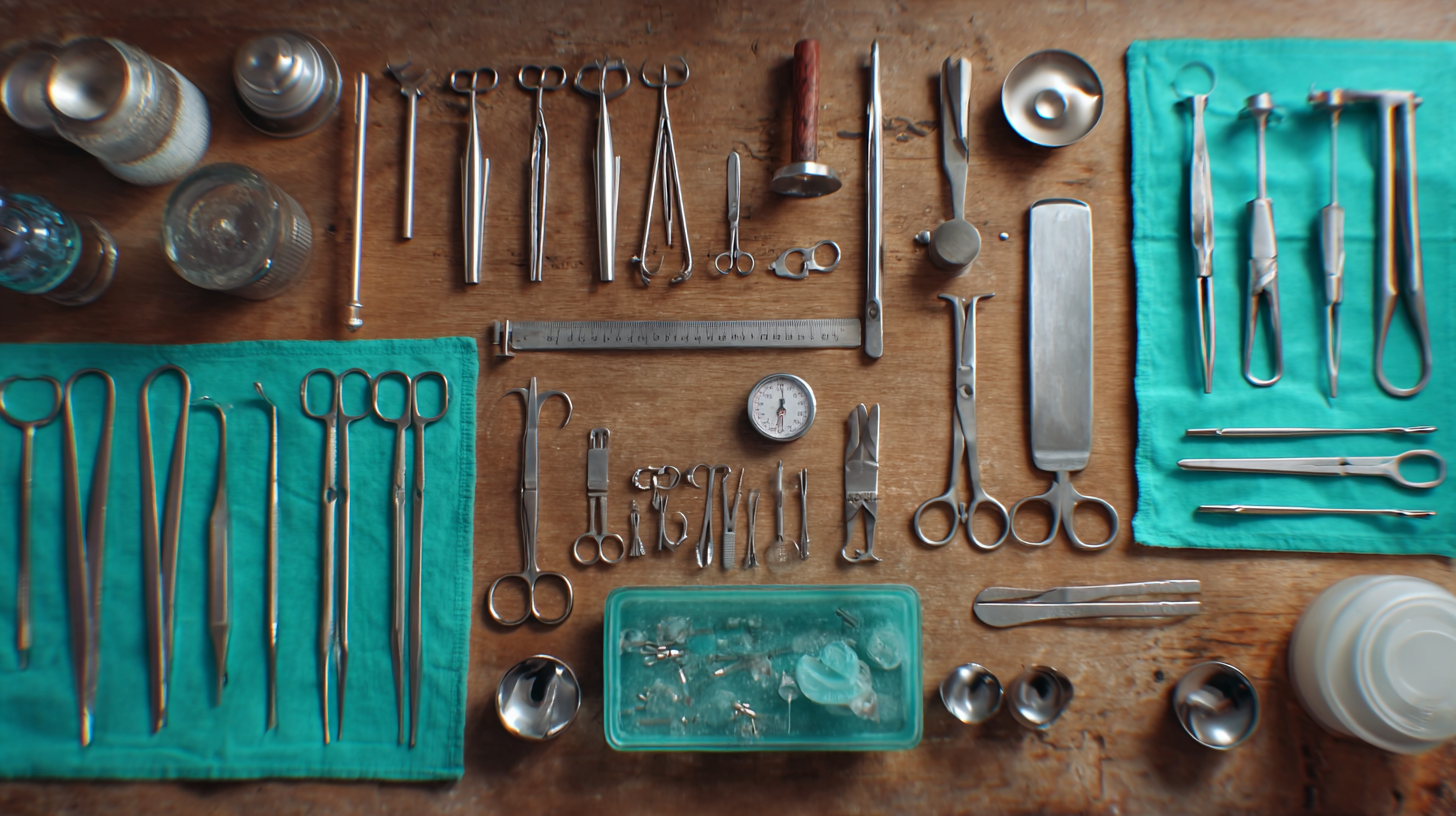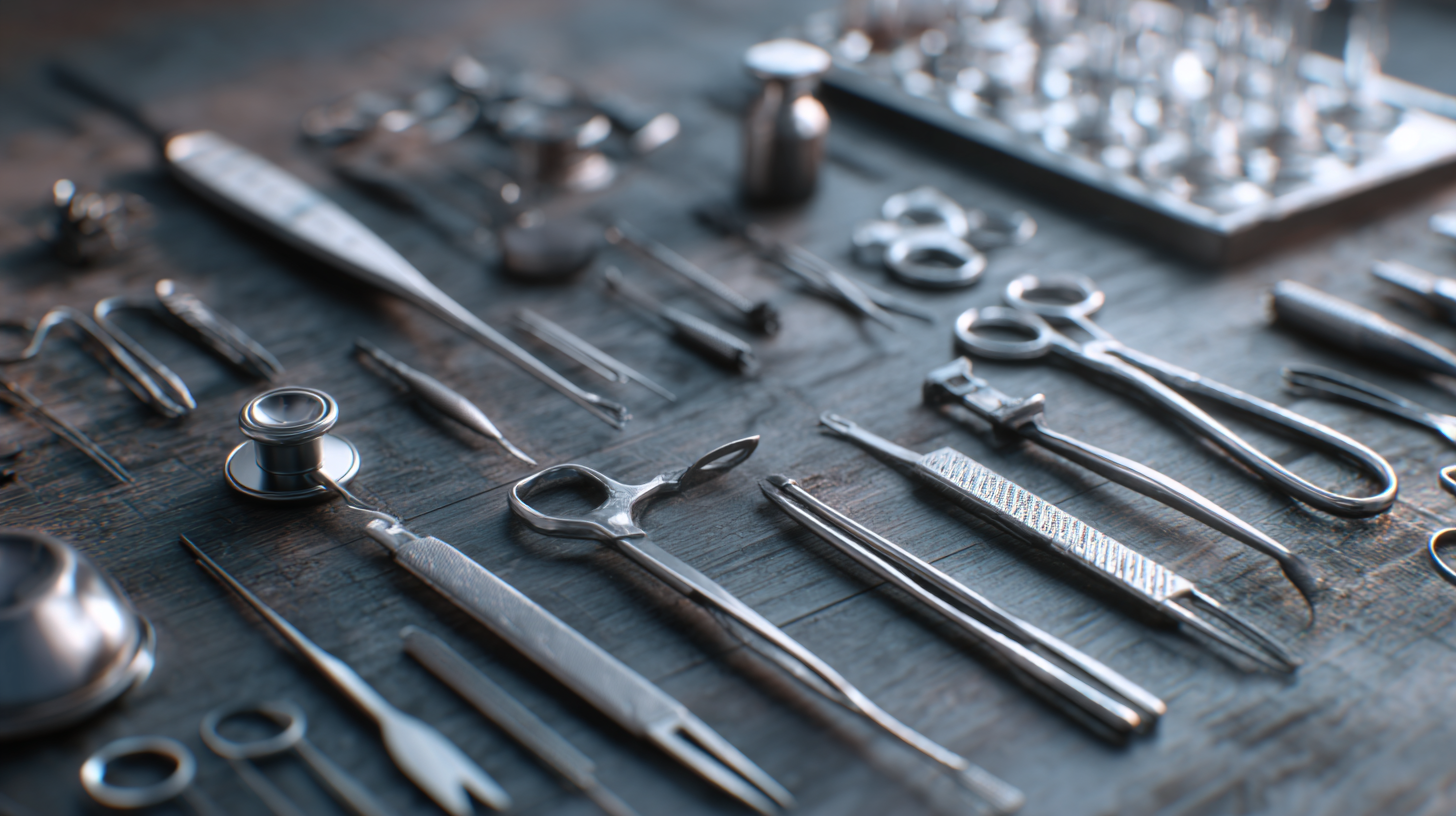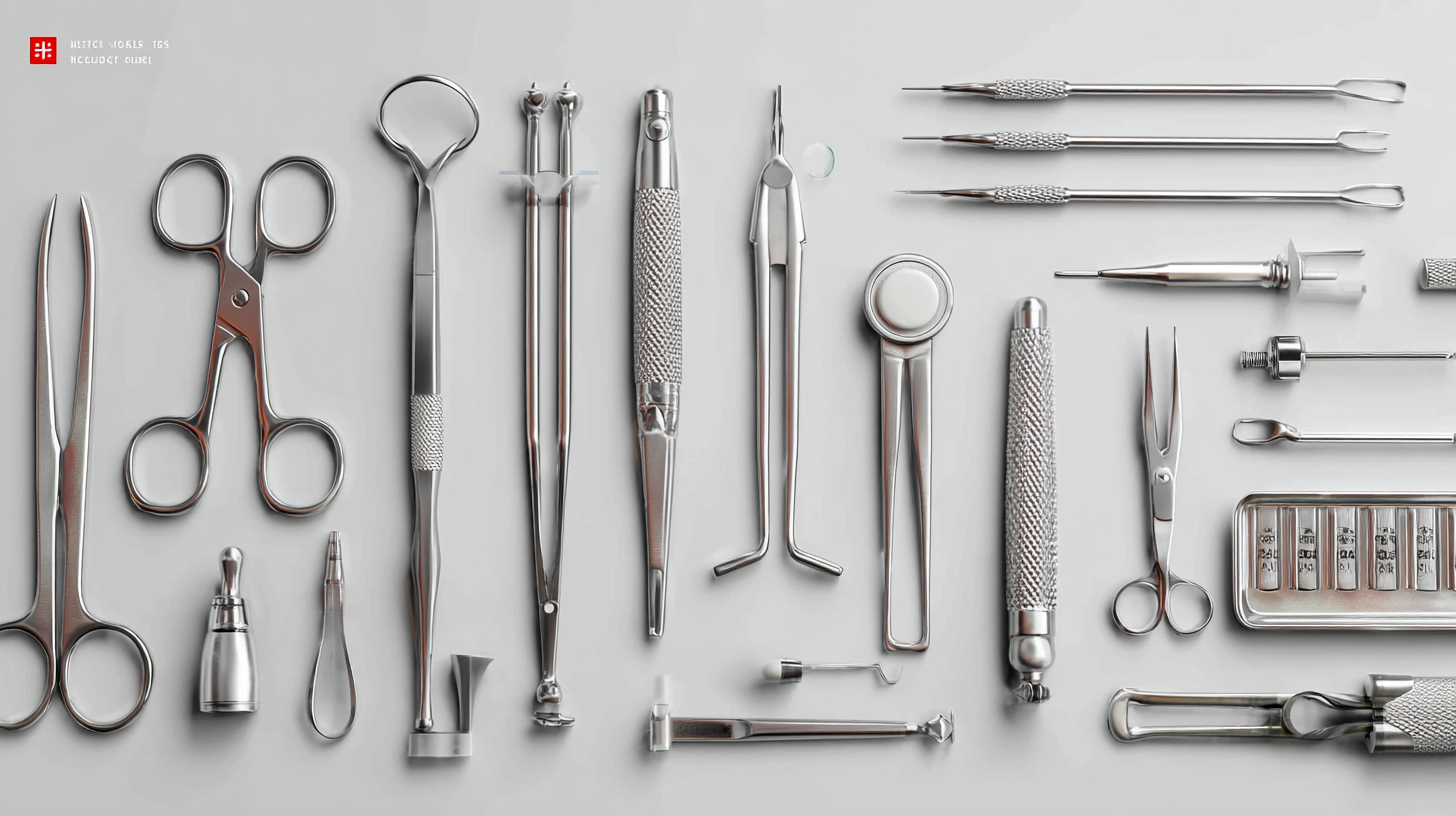
Ultimate Guide to Choosing the Best Medical Instruments for Your Practice
In the ever-evolving healthcare landscape, the selection of high-quality Medical Instruments is paramount for ensuring optimal patient care and operational efficiency. According to a report from Market Research Future, the global medical devices market is projected to reach approximately $600 billion by 2025, driven largely by advancements in technology and increasing healthcare expenditure. As practitioners strive to provide the best services, choosing reliable suppliers for these critical instruments becomes essential. A study by the World Health Organization highlights that subpar medical equipment can lead to significant adverse health outcomes, underscoring the need for stringent supplier evaluation and collaboration. Thus, understanding how to find high-quality suppliers is not only beneficial for maintaining standards but vital for enhancing overall practice performance and patient safety.

Top 5 Essential Factors to Consider When Selecting Medical Instruments
When selecting medical instruments for your practice, several essential factors come into play that can significantly impact both the quality of care you provide and the efficiency of your operations. First and foremost, consider the quality of the instruments. High-quality tools not only enhance precision and safety but also ensure longevity, ultimately saving you money in the long run. Look for reputable manufacturers who comply with industry standards and offer warranties, as this can be a key indicator of reliability.

Another critical factor is the usability of the instruments. User-friendly designs that facilitate quick and straightforward operation can improve patient experience and reduce the likelihood of user error. It’s also important to consider the specific needs of your practice and the patient population you serve. For example, pediatric practices may require different types of instruments compared to geriatric or surgical practices. Lastly, budget constraints cannot be overlooked. While it's essential to invest in quality instruments, balancing cost with functionality will ensure that your practice remains financially viable while still providing top-notch care.
7 Key Features to Look for in Quality Medical Equipment
Selecting the right medical instruments for your practice is crucial for delivering high-quality patient care. When evaluating medical equipment, there are seven key features you should prioritize to ensure you make an informed choice.
First, consider the durability of the instruments. According to a recent report by the Medical Device Manufacturers Association, approximately 30% of medical equipment failures result from poor durability, leading to costly replacements and downtime.
Next, ease of use is essential. Equipment should be intuitive, with user-friendly interfaces that minimize training time. A study published in the Journal of Medical Devices indicates that 65% of healthcare professionals reported enhanced workflow thanks to user-friendly designs. Additionally, look for equipment that offers versatility—can it perform multiple functions or adapt to different procedures? This can significantly enhance your practice’s efficiency.
Tip: Always check for certifications and standards compliance, such as FDA approval or ISO certifications, as these ensure safety and reliability. Investing in equipment that meets industry regulations can reduce liability and ensure better patient outcomes.
Another tip is to consider warranties and customer support—quality equipment should come with robust service agreements to address any issues promptly.
3 Common Mistakes to Avoid When Buying Medical Instruments
 When purchasing medical instruments for your practice, avoiding common pitfalls can save you both time and money. One frequent mistake is neglecting to thoroughly assess your specific needs. Many practitioners succumb to the lure of trendy tools, but investing in instruments that don’t align with your practice's requirements can lead to inefficiency and wasted resources. Conducting a needs analysis and consulting with your staff can help ensure that the instruments you choose enhance your workflow rather than hinder it.
When purchasing medical instruments for your practice, avoiding common pitfalls can save you both time and money. One frequent mistake is neglecting to thoroughly assess your specific needs. Many practitioners succumb to the lure of trendy tools, but investing in instruments that don’t align with your practice's requirements can lead to inefficiency and wasted resources. Conducting a needs analysis and consulting with your staff can help ensure that the instruments you choose enhance your workflow rather than hinder it.
Another significant error is failing to consider the long-term costs associated with maintenance and replacement. While it might be tempting to opt for the least expensive options upfront, cheaper instruments often come with higher maintenance costs and shorter lifespans. Instead, evaluate the total cost of ownership for each device, considering factors like durability, warranty, and the availability of parts. This foresight can lead to better investment choices that benefit your practice in the long run.
Lastly, many buyers overlook the importance of checking reviews and seeking recommendations from fellow practitioners. Purchasing medical instruments without thorough research can result in subpar performance and dissatisfaction. Engaging with peers and reading reviews can provide valuable insights and help you choose reliable instruments that meet industry standards. By sidestepping these mistakes, you can create a more efficient and effective medical practice.
10 Tips for Evaluating Vendor Options for Medical Supplies
When selecting medical instruments for your practice, evaluating vendor options is crucial. Here are ten tips to help you make informed decisions. First, consider the quality of the products. Ensure that the instruments meet industry standards and regulations, as patient safety hinges on the reliability of these tools. Look for vendors who provide detailed specifications and certifications for their products, demonstrating their commitment to quality.
Next, assess the vendor’s reputation and customer service. A reliable vendor should have positive reviews and testimonials from other healthcare providers. Establish whether they offer adequate support and training for their instruments, as this can significantly impact their effective use in your practice. Additionally, inquire about warranty and return policies to ensure that you are protected in case of defects or dissatisfaction with the products. By carefully evaluating these aspects, you can choose the best medical instruments that will enhance your practice and patient care.
6 Tips for Maintaining and Extending the Life of Your Medical Instruments
When it comes to ensuring the longevity and performance of medical instruments, proper maintenance is key. Here are some essential tips to help you extend the life of your tools.
First, regular cleaning is crucial. After each use, instruments should be thoroughly cleaned to remove any biological material or residue. Using the appropriate cleaning solutions and following manufacturer instructions will prevent corrosion and tarnishing. Additionally, establish a routine for sterilizing instruments, as this will not only keep them hygienic but also in prime condition for future use.
Another vital aspect of maintaining medical instruments is proper storage. Instruments should be stored in a clean, dry environment, ideally in specially designed cases or cabinets. Avoid overcrowding, as this can lead to nicks and scratches. Lastly, conduct regular inspections for any signs of wear or damage, and address these issues promptly to avoid compromising their function. By implementing these practices, you can ensure your medical instruments remain reliable and effective for years to come.
Ultimate Guide to Choosing the Best Medical Instruments for Your Practice - 6 Tips for Maintaining and Extending the Life of Your Medical Instruments
| Instrument Type | Maintenance Tip | Frequency of Maintenance | Expected Lifespan (Years) |
|---|---|---|---|
| Scalpel | Keep the blade sharp and clean | After each use | 5 |
| Stethoscope | Wipe down with disinfectant regularly | Weekly | 10 |
| Thermometer | Calibrate and check battery life | Monthly | 7 |
| Surgical Scissors | Lubricate joints to prevent rust | Every 6 months | 8 |
| Blood Pressure Cuff | Inspect for leaks or tears | Monthly | 5 |
| Otoscope | Clean the lens and replace bulbs | After each use | 6 |
